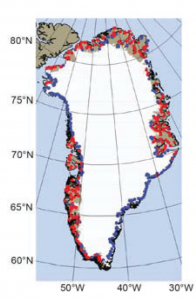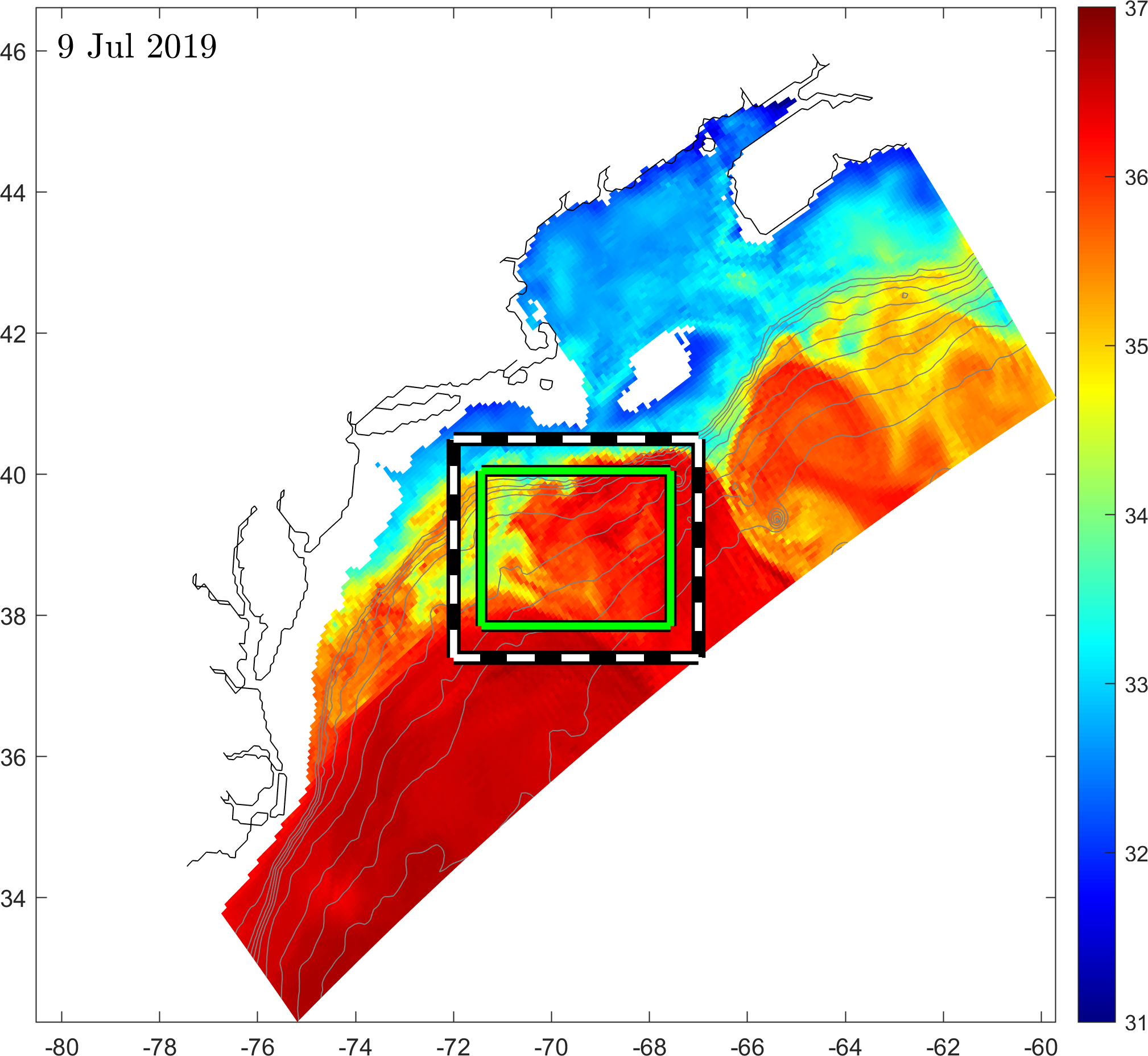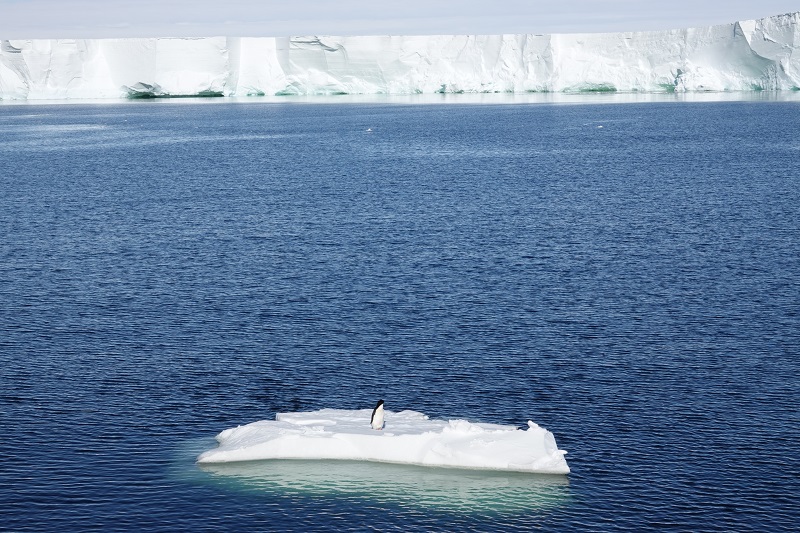Projects
We study bio-physical interactions in a variety of regions experiencing rapid change, both at high- and mid-latitudes.
Current Projects
Subglacial discharge effects on meltwater transport pathways in Southern Greenland
Funder: National Science Foundation (NSF)
Role: Co-Investigator
Description: Coastal waters south of Greenland are strongly influenced by the seasonal input of meltwater from the Greenland Ice Sheet. While many modeling studies have investigated the fate of the meltwater in the ocean, they generally introduce the freshwater at fjords at the surface. Most glaciers off East Greenland are marine-terminating, however, where meltwater is delivered deep below the surface at the grounding line, which could affect the transport pathways of
meltwater in the Labrador Sea. By including subglacial discharge plumes in a high-resolution regional model, this project explores these impacts.
Modeling Pathways of Nutrient-Rich Gulf Stream Intrusions onto the Continental Slope
Funder: WHOI Independent Study Award
Role: Principal Investigator
Description: In recent years, the Gulf Stream (GS) offshore of the U.S. Northeast coast has become increasingly unstable; vigorous meanders now more frequently transport GS water northward into the Middle Atlantic Bight (MAB) slope sea. In summer 2019, an unexpected intense subsurface diatom bloom associated with the upwelling of nutrient-rich subsurface GS water was observed in the MAB slope sea. A GS meander directly intruding toward the northern MAB shelf edge likely played a role in the spreading and upwelling of the subsurface GS water in the slope sea, though the mechanisms involved are not yet known. By, leveraging the Rutgers Doppio model of the MAB, this project aims to isolate these pathways of GS water into the slope sea.
Accelerating Thwaites Ecosystem Impacts for the Southern Ocean (ARTEMIS)
Funder: National Science Foundation (NSF), National Environmental Research Counsil (NERC)
Role: Subcontract
Description: The Amundsen Sea Embayment is home to some of Antarctica's fasting melting glaciers, supplying dissolved iron that supports an extraordinarily productive marine ecosystem. In austral summer 2022, the interdisciplinary ARTEMIS team conducted adaptive biogeochemical sampling of glacial meltwater inflows and outflows at ice shelves in the Amundsen Sea to better characterize this "meltwater pump" of iron, in collaboration with the International Thwaites Glacier Collaboration (ITGC).


